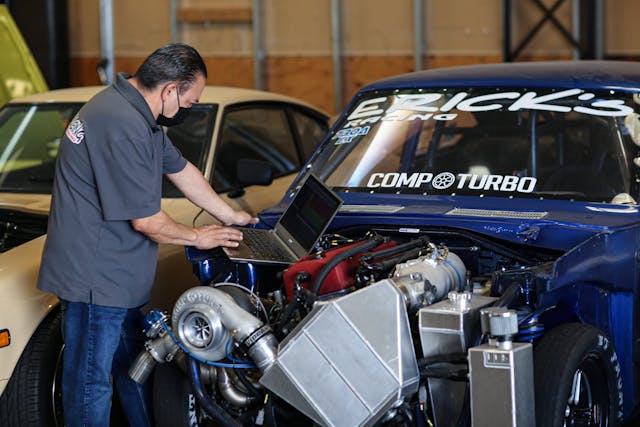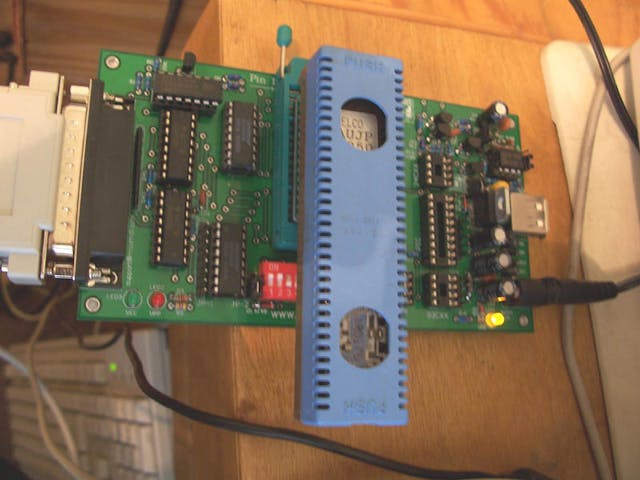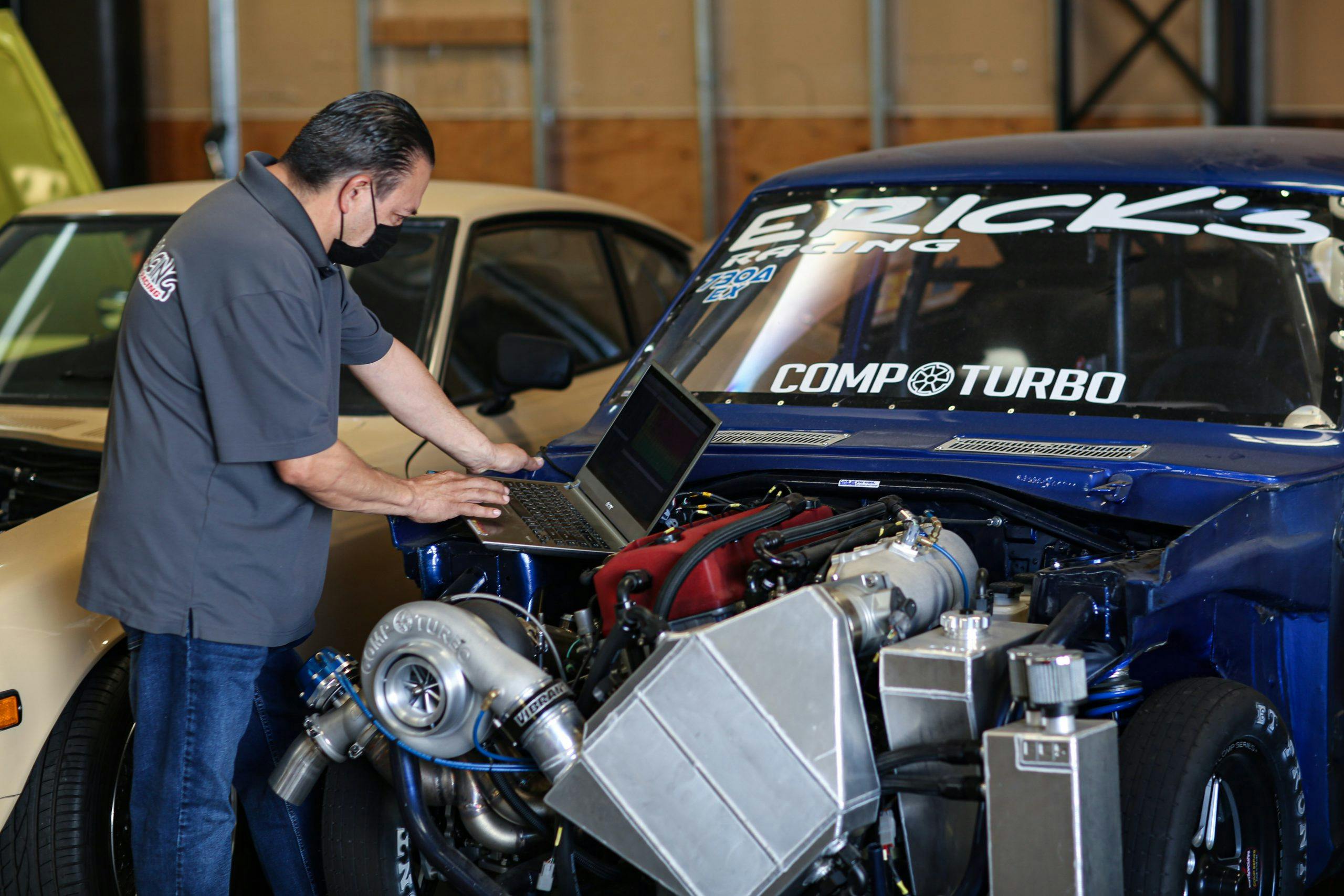Media | Articles
ECU and EFI 101: A beginner’s guide to performance tuning
As he pulled into Toretto’s Market & Cafe, Vince was disappointed with his ’99 Nissan Maxima’s performance after last night’s street race. “Talk to me, Jesse, this ain’t working,” he cried.
“It’s your fuel map!” said the scrawny cat as he climbed out of a modified ’95 VW Jetta. “It’s got a nasty hole, that’s why you’re unloading in third. I lengthen the injector pulse a millisecond. Just tune the NOS timer, you’ll run nines!”
Okay, so engine tuning is a little more complicated than Jesse and Vince’s exchange in The Fast and The Furious, but for many, it’s one of pop-culture’s only portrayals of the art of tuning. We don’t have to go into the myriad of logical and technical automotive fallacies that the script writers dreamed up for the film’s characters (not to mention the imaginary gearboxes), but we can shine a light on this mysterious black box in the aftermarket world. In this EFI and ECU tuning 101 session, let’s break down why we modify late-model cars, how it actually works, and why it’s important moving forward for people to retain the right to do so.
Why even enter the Matrix?
Skilled tuning often involves utilizing a set of tools to massage the engine and its various controls into working together nicely. People tune their cars for many reasons, not just outright performance. Tweaking your project’s brainbox opens a road to better fuel economy, easing engine swaps into new chassis, and even unlocking features previously hidden from owners.
As an example, we’ll start by looking at GM’s GMT800 pickups equipped with the beefy Allison 1000 five-speed automatic (which was actually a six-speed transmission with sixth gear disabled in the earlier model trucks, before GM refreshed the GMT800s for 2006 and finally released sixth from its holding cell). All 2001–2005 GM trucks with the Allison came with the capability for double-overdrive from the additional gear, but GM initially opted to program it out. With the right kit and a little fiddling with the transmission controller, you can gain an additional 0.61:1 overdrive and drop about 400 rpm from your cruising speed.
Marketplace
Buy and sell classics with confidence
This circumstance isn’t unique to GM, either. Today, companies like Tesla actively hide features behind a paywall or fee-based subscription. These software-enabled features may become more common in the future. BMW already retracted its plans to charge Apple CarPlay users an annual fee, in response to customer backlash. It’s not hard to imagine a car coming equipped with heated seats that only work if you pay a monthly fee, and we hope this business model dies an unceremonious death before it gains any traction.
Maybe, however, you’d prefer to do your own feature deleting. That’s what you’ll tell your ECU (engine control unit) anyway. It may not always be in the budget—or even initially possible—to run an aftermarket engine management system, so repurposing the factory ECU for use in a swap project has become one of the most common use cases for tuning. Essentially, the job is to trick the ECU into thinking it is still at home, rather than inside whatever car now surrounds it. The process may involve disabling different trouble codes and parameters to allow the ECU to quit worrying about components like missing anti-theft parts or catalytic converters.
Engine swaps today are more complicated than ever, because the ECUs managing an engine’s electronics have become increasingly secure. I once swapped a 2010 Subaru WRX’s turbocharged EJ25 engine into a 1996 Impreza coupe, and one of the hurdles was to disable trouble codes stemming from the lack of wiring and modules from WRX’s doors. (I had classified those harnesses, modules, and switches were as “excess weight.”) Oddly enough, I did retain the window switches from the driver’s door so that I could enter particular, cheat-code-like button combinations to disable the factory anti-theft system during the swap. Other system trouble codes, namely those from the donor WRX’s wheel speed and ABS sensors, had to also be disabled to prevent limp mode. Needless to say, an aftermarket ECU entered the picture as soon as budget allowed, but without the initial modification of the factory ECU, that project would’ve dragged on for much longer.
A page from the EFI history books
What’s been most interesting about EFI (electronic fuel injection) tuning over the past four decades is how it has evolved from humble electromechanical black boxes, with a Medusa-worthy tangle of vacuum lines, to the modern supercomputer arrays we know today. The game for mechanics and performance geeks means cracking the latest OEM hardware, reverse-engineering the plethora of data uncovered, and building a tuning solution that can pull all the desired strings.
For the most part, EFI tuning began with a humble chip: the erasable programmable read-only memory (EPROM). Thirty-odd years ago, these little memory chips were being physically rewritten at the silicon level in a process that became known as burning, since the chip was physically opening and closing small connections within it that translated to the basic code that makes up the engine’s tuning calibration. Today, flash memory can rewrite any individual segment of data on the fly, but EPROM was limited because it could only be totally erased and wholly reprogrammed, which required the chip to be inside a programming tool instead of in the ECU; live-tuning was not yet practical. Burning opened the (tuna) can on EFI performance, and not just for the tuners themselves who had the skill and equipment to reverse engineer the factory EPROM and substitute their own calibrations. The phenomenon gave birth to the early EFI aftermarket when these chips became common speed shop fodder. Instead of tearing apart a fuel-filled carburetor or having to futz with distributor weights, you could just “chip it” and quickly pick up some performance.
As a side note, before EPROM programming tools became widespread in the 1990s, some tuners wired extra injectors onto oil pressure switches (OPS) in the intake, so that when boost hit the OPS’ trigger pressure, the additional injectors would spray the desired fuel amount that would otherwise be impossible to program via the ECU. As you can imagine, the fuel ratio graph looked like a staircase during a hard pull, as the different stages of injectors clicked on at full-blast, each wired to a different-spec OPS.
As hardware technology shifted away from chips that had to physically rework their electrical innards to be programmed, flash memory chips hit the scene. They were soldered to the board and no longer removable, but they could be more easily rewritten on the fly and the programming could be done via the same hardware that reads the chip, unlike EPROM. More importantly for OEMs, more data could be stored and it could be read faster, allowing for higher-resolution operation and more routines for different conditions.
Today’s tools of the trade
Generally speaking, today’s tuning solutions come in one of two sets, though there is certainly overlap depending on the product in question. Simply, we’re dealing with handheld and PC-based tuning (though many handhelds are often used as conduits for PC tuning). For the sake of clarity, we’ll just break them into their own general categories because broad strokes paint fast art.

Handhelds are generally the lowest tool on the tuning totem pole. At their core, they’re budget-friendly options for adjusting basic parameters. Many carry pre-programmed “canned” tunes for minor tweaks to the engine and transmission calibration. Aside from a little power bump and, perhaps, firmer shifts, they can also recalibrate speedometers for non-original tire sizes, tweak cooling fan trigger points, and a few other minor adjustments. As of late, tuning companies like Cobb have specialized in handhelds come with the capability to plug into a laptop for more comprehensive tuning. The handheld itself acts as a multi-function gauge display (showing boost, fuel-air ratio, knock feedback, and more) when not hooked up to a PC. If you see a little iPod-looking thing mounted on a tuner car’s HVAC vent, it’s most likely some kind of handheld.

That leads us to PC tuning, the most comprehensive option available, with software suites tailored to different OEMs or aftermarket ECUs. Simply put, PC tuning gives you the reins over the entire scope of performance calibration. Each tuning variable (spark, fuel, boost, etc.) is plotted on what’s basically a spreadsheet, and the user can fine-tune the various parameters at each point along the rev range based on how much load is on the engine. Typically, the only equipment someone purchases is a connecting cable or dongle, and the rest is taken care of via the PC’s software. Obviously, with greater computing power and more advanced software comes greater responsibility (and more cost), but the ability to dial in any combo you can imagine becomes invaluable as you dive deeper into the tuning rabbit hole.
The catch? Well, you can easily destroy a motor if you don’t know what you’re doing. Remember, with full control, there’s nothing stopping you from adding 20 degrees of timing, knocking those pistons into aluminum shrapnel, or pulling so much fuel that they’ll just melt instead. Fun!
Right to repair
We can’t talk about modern engine tuning without discussing right to repair, the legislative concept that repair shops and vehicle owners have a right to repair, modify, or reverse-engineer the product they’ve bought and wholly own. OEMs want to assert control in part because of obvious concerns, like trying to keep warranty claims caused by poor tuning to a minimum, but as of late, “security” has become the pain point that companies leverage. Their argument: Because driver-assistance systems are now becoming widely used, showing up in everything from lane-departure systems to adaptive cruise control, this functionality can similarly control a car’s inputs. In turn, OEMs contend that they must encrypt and lock down the ECU in order to prevent tampering that could result in irreparable damage or unsanctioned control of a vehicle.

With all that said, it’s extraordinarily unlikely that OEMs will ever build a fully hack-proof vehicle. Whether automakers successfully lobby to legally barricade independent repair shops and individual owners from being able to modify or access the vehicle calibration and data pipeline, there will always be a more clever mouse that figures out how to bypass spring-loaded protections. On one side of the debate are multinational corporations who stand to gain from an iron-like grip on this sphere, while the other side seeks to have a say in how they use their property and contends that accessing this data can be done safely.
We’re at a turning point now where several industries are coming together on this issue. Farmers are tired of their John Deeres being unfixable in the field, and computer technicians bemoan Apple’s penchant to eliminate user-serviceable parts (like batteries, storage, or memory). Now, industry OEMs are pouring millions of dollars into resources to fight right-to-repair legislation, in some cases playing fast and loose with the truth in state and national hearings. The issue itself is complicated, the industries it spans even more so, and it’s up to us gearheads to help educate our representatives on why this issue matters.






Thanks for helping me understand that there has been an evolution in electronic fuel injection over the past decades, and they have modern supercomputer designs these days. It seems like there are new settings or components in those kinds of systems which has to be checked by a professional if you find issues or if you also want some maintenance tasks done on it. And I think that investing in taking care of it will be for your own good to ensure that your vehicle will not easily get damaged or have issues while you are on the road. http://yearwoodperformance.com/p-24079-fuel-injection-systems.html
I would love some info or sites that I could read or visit in order to learn more about eliminating specific trouble codes like O2 sensors and the like. mainly on GM. I have been a tech for going on 40 years. I have all my own scanners . A few factory tools. Tech 2, GDS, Autel, VX Diag, Think, and a couple more. I’ve been reprograming to OEM for years using the OEM software suites. and different J2534 devices. Engine performance and diagnostic has been my main area or work for 25+ years. So any info you may have about the actual coding or recoding of the OEM;s OE program file would be greatly appreciated.
I found the website hpacademy.com to provide amazing courses on EFI Tuning. Really helpful and not very expensive